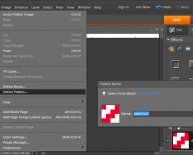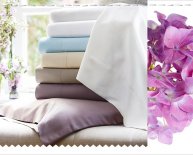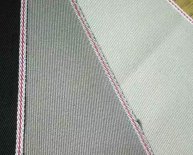
Twill weave Structures
With finger manipulation, we can obtain interlacing not possible or not easily achievable with a loom; examples are tapestry, all the in-lays and leno. In some cases a special threading is needed.
Loom Controlled Structures
Plain weave: the structure with an interlacement at every thread, one over, one under; basket weaves are a derivative, two over, two under, or three, etc.
Twills: floats are formed over at least two threads, and they are offset with every shot; they generally form ungrouped weft and warp floats.
Unit weaves: floats are an integral part of the cloth, and are arranged in blocks; examples are huck, M’s & O’s, Swedish lace.
Supplementary weft weaves: floats are superimposed to the cloth by an additional weft, and are arranged in blocks; examples are overshot, Monks’ belts, crackle.
Tied weaves: floats are superimposed to the cloth by an additional weft, are arranged in blocks, but are tied down by one or more threads per group; on 4 shafts, summer and winter is the only example that has more than one block.
Supplementary warp weaves (with or without supplementary weft); more than one warp interlace with one or more than one weft; examples are doubleweave and piqué.
Satins: weft floats are stitched at regular points so as not to form an obvious pattern; they require at least 5 shafts; the resulting fabric has one side weft-dominant, the other warp-dominant.
In some cases, the treadling of one weave can be used for another; for example, summer and winter can be woven as overshot. There are also treadling methods which do not have threadings associated with them. The treadling is used on a variety of other weaves. For example, boundweave can be woven on twills or overshot.
Classification According to Sett
Tabby is plain weave that is perfectly balanced, 50% of the cloth is warp, 50% is weft. From this center, we can move to the two opposite directions.
In a weft-face fabric, the warp is completely covered by the weft; tapestry and boundweave are examples. The warp is sparsely sett to achieve this effect.
In a warp-faced fabric, the warp completely covers the weft; rep weave and traditional inkle weaving are examples. The warp is sett at 4 times the sett for plain weave to achieve this effect.
Between the two extremes, fabrics range from weft-faced through weft-dominant, tabby, warp-dominant and finally to warp-faced. The sett always plays a role.
Do not confuse these fabrics with those that are produced by unbalanced weaves. In this case, one side of the fabric is warp-dominant, while the other is weft-dominant. Examples are satins and 3 /1 twills. This results from a combination of a closer sett, and sheds produced by lifting few shafts, compared to those not lifted.
Putting It All Together
We have seen that we have already two options: the weave structure and the type of fabric; for example, we can weave a twill as a weft-faced fabric.
In threading, we often have control over the repeats of a weave, or the length of a repeat. For example, with huck, we can make the block as wide as we want (provided we have an odd number of threads); with summer and winter, we can repeat the block as many times as we like.
But we have more options. In weaving, we may be able to treadle our structure with the treadling of another: a straight twill can be woven as a pointed twill, or overshot can be woven as summer and winter.
In addition, we have available, for some structures, treadling methods: treadling sequences that are not associated with a particular weave, but can be used with several. For example, swivel can be woven on plain weave or overshot.
Add to those color choices and fiber choices, and the possibilities are almost infinite!
But we must remember that we are somewhat constrained, once we choose a specific product. For example, a weft-face twill would generally not be appropriate for fabric for a garment, as it will probably be too stiff and heavy; even using extremely thin yarns would probably result in a fabric that is not drapeable enough for a garment.

















